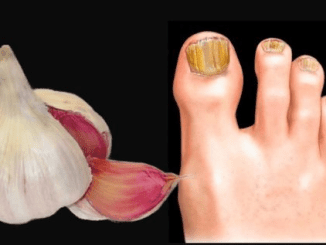Blood clots are a silent yet dangerous health condition that can strike without warning. While clotting is essential for healing injuries, blood clots that form inappropriately can lead to severe complications, such as strokes, heart attacks, or pulmonary embolisms. Knowing the signs of a blood clot could save your life. Let’s explore the ten most critical indicators, causes, and steps you can take to protect yourself.
Understanding Blood Clots and Their Risks
A blood clot forms when blood thickens and clumps together. While this natural process helps seal wounds, clots that develop in veins or arteries without an injury can disrupt blood flow. These rogue clots can cause deep vein thrombosis (DVT), pulmonary embolisms (PE), or even life-threatening strokes.

Where clots form determines their risk level. For instance:
- Venous Clots: These often develop in the legs (DVT) and can travel to the lungs, causing a PE.
- Arterial Clots: These block oxygen to critical organs, leading to strokes or heart attacks.
Understanding how clots work and where they strike is the first step to identifying their warning signs.
Common Causes of Blood Clots
Several factors increase your risk of developing a blood clot, including:
- Prolonged Inactivity: Sitting for hours during flights or bed rest slows circulation.
- Surgery or Injury: Trauma can trigger clot formation during healing.
- Medical Conditions: Cancer, heart disease, and autoimmune disorders heighten the risk.
- Lifestyle Choices: Smoking, obesity, and dehydration can also contribute.
- Pregnancy and Birth Control: Hormonal changes increase clotting likelihood.
Knowing these risk factors can help you stay vigilant and proactive about prevention.
The Top 10 Signs of a Blood Clot
If you experience any of these symptoms, it’s crucial to take them seriously. Blood clots can escalate rapidly, and early detection is key to avoiding complications.
1. Unexplained Swelling in Limbs
Swelling, particularly in one leg or arm, is a hallmark sign of DVT. It often occurs without a clear reason, such as an injury, and can appear suddenly or gradually worsen.
2. Persistent Pain or Tenderness
Pain that feels like cramping or soreness, especially in the calf or thigh, can indicate a blood clot. This discomfort usually doesn’t resolve with rest and isn’t linked to physical exertion.
3. Sudden Shortness of Breath
Struggling to breathe could signal a pulmonary embolism—a blood clot that has traveled to the lungs. This is a medical emergency and may be accompanied by a feeling of panic or chest discomfort.
4. Chest Pain That Worsens with Breathing
A sharp or stabbing pain in the chest that intensifies when you take a deep breath might be another sign of a PE. This symptom is often mistaken for a heart attack but requires immediate medical attention.
5. Red or Discolored Skin
Skin over the affected area may turn red, bluish, or purple. This discoloration happens because the clot restricts blood flow, making it a visible indicator of trouble beneath the surface.

6. Warmth in the Affected Area
Blood clots can trigger localized inflammation, causing the skin to feel warm to the touch. This warmth often accompanies swelling and redness, making it an easy-to-spot trio of symptoms.
7. Rapid Heartbeat or Palpitations
If your heart races without reason, it might be trying to compensate for reduced oxygen levels due to a blood clot. This symptom becomes more alarming when paired with shortness of breath or chest pain.
8. Unexplained Coughing or Wheezing
Persistent coughing, especially if it produces pink or bloody mucus, could indicate a pulmonary embolism. This symptom may also involve wheezing or difficulty catching your breath.

9. Dizziness or Lightheadedness
Clots that disrupt circulation can cause dizziness or fainting by depriving your brain of oxygen. If this happens suddenly and without an obvious cause, it’s time to act.
10. Fatigue Without a Clear Cause
Feeling unusually tired or weak can signal that your body is working overtime to cope with reduced blood flow. While fatigue alone isn’t definitive, it can be an early warning sign when paired with other symptoms.
When to Seek Medical Attention

If you experience one or more of these symptoms—especially if they develop suddenly or severely—don’t hesitate to seek medical help. Blood clots are medical emergencies, and timely intervention can prevent life-threatening outcomes.
How to Prevent Blood Clots
Prevention starts with healthy habits and an awareness of your risk factors. Here’s how you can protect yourself:
- Stay Active: Regular movement helps maintain healthy circulation. If you’re sitting for long periods, take breaks to stretch or walk around.
- Maintain Hydration: Drinking plenty of water reduces the risk of clotting, especially during travel or after surgery.
- Manage Weight and Diet: A balanced diet and healthy weight minimize strain on your circulatory system.
- Quit Smoking: Smoking damages blood vessels and increases clotting risk.
- Wear Compression Garments: These can help improve circulation, particularly for those prone to DVT.
- Follow Medical Advice: If you’re at high risk, consult your doctor about preventative measures, such as anticoagulants.
Conclusion: Stay Alert to Protect Your Health
Blood clots are serious, but they’re also preventable and treatable when caught early. By understanding the risks, recognizing the signs, and taking proactive steps, you can safeguard your health.
Remember, symptoms like swelling, unexplained pain, or shortness of breath are your body’s way of signaling that something isn’t right. Don’t ignore these warnings—seek medical attention and take action. After all, being proactive about your health is the best way to ensure peace of mind and a long, active life.


